Dresses are part and parcel of human life, and dress making date had been started before thousands of years. Mechanized sewing machines lent the greatest impetus for easy dress making and large scale garment production eventually. Let’s find the chronicle sequence to evaluate the garment industry step by step.
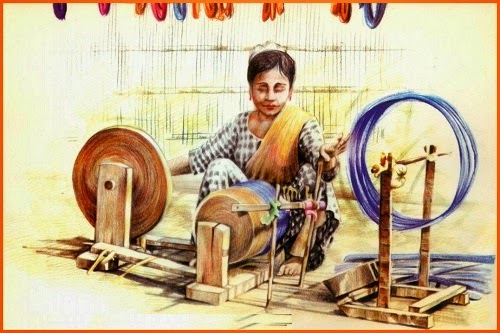 The Charka, most commonly known as the spinning wheel, was a wheel of prosperity for new spinners. For them, it represented a wheel of life as spinning the Charka to make spun yarnwas their only means of earning a living. Charka is an ancient process to develop personal clothing when they feel the interest to cover them by fiber.Legend has it that this wheel had a spellbinding effect on the spinner leaving them engrossed with pondering, wondering and dreaming about life in a rhythm of the turning of the wheel – possibly another reason for it being named the ‘wheel of life.’ It is assumed that human civilization significantly progressed with the advent of a wheel. It was true for human clothing too, as signified by the Charka The Charka, most commonly known as the spinning wheel, was a wheel of prosperity for new spinners. For them, it represented a wheel of life as spinning the Charka to make spun yarnwas their only means of earning a living. Charka is an ancient process to develop personal clothing when they feel the interest to cover them by fiber.Legend has it that this wheel had a spellbinding effect on the spinner leaving them engrossed with pondering, wondering and dreaming about life in a rhythm of the turning of the wheel – possibly another reason for it being named the ‘wheel of life.’ It is assumed that human civilization significantly progressed with the advent of a wheel. It was true for human clothing too, as signified by the Charka |
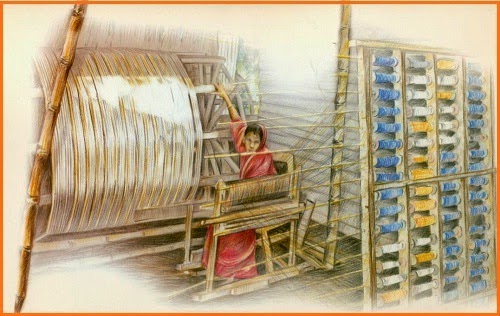 After yarn had been spun in the Charka, the next step was to use the loom to interlace two distinct sets of yarns or threads (called the warp and the filling or weft) to make fabric. Loom demanded certain patterns of movements of its operators along with certain patterns in the construction of the fabric- most notably running the warp threads length ways on the piece of cloth while running the weft across from side to side, across the bolt of cloth. After yarn had been spun in the Charka, the next step was to use the loom to interlace two distinct sets of yarns or threads (called the warp and the filling or weft) to make fabric. Loom demanded certain patterns of movements of its operators along with certain patterns in the construction of the fabric- most notably running the warp threads length ways on the piece of cloth while running the weft across from side to side, across the bolt of cloth. |
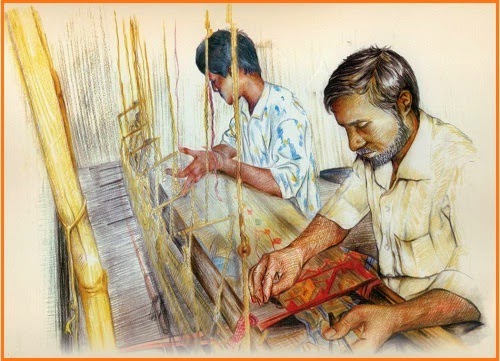 Throughout the course of time, human beings have never been satisfied with fulfilling their little needs only. They have always tried to infuse their individual ideas into the existing technology. The result of such persistent indigenous creativity, ingenuity, and modifications in clothing led to the advent of exclusive fashion houses and obsessive fashion designers. Throughout the course of time, human beings have never been satisfied with fulfilling their little needs only. They have always tried to infuse their individual ideas into the existing technology. The result of such persistent indigenous creativity, ingenuity, and modifications in clothing led to the advent of exclusive fashion houses and obsessive fashion designers. |
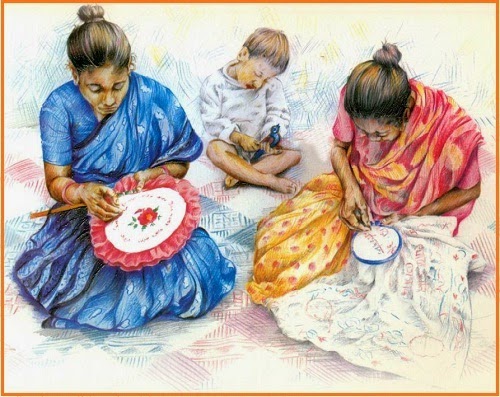 Human beings quickly became dissatisfied with the mundane clothing they produced as it lacked any sort of design or aesthetic aspect. To make clothing more visually stimulating and to embed them with artistic panache, humans decided to go for a thread into thread or thread over thread work – popularly known as embroidery in modern day clothing. Human beings quickly became dissatisfied with the mundane clothing they produced as it lacked any sort of design or aesthetic aspect. To make clothing more visually stimulating and to embed them with artistic panache, humans decided to go for a thread into thread or thread over thread work – popularly known as embroidery in modern day clothing. |
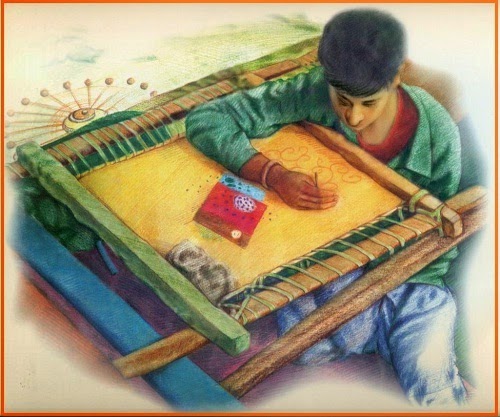 After the invention of embroidery, humans sought further ostentation of different clothing products by translating their thoughts (through the thread) into a depiction of various objects, wishes, fables and myths on to them. Complex Needlework like Aari, Karchupi bore witness to that and was the means by which humans captured their imagination on cloth. After the invention of embroidery, humans sought further ostentation of different clothing products by translating their thoughts (through the thread) into a depiction of various objects, wishes, fables and myths on to them. Complex Needlework like Aari, Karchupi bore witness to that and was the means by which humans captured their imagination on cloth. |
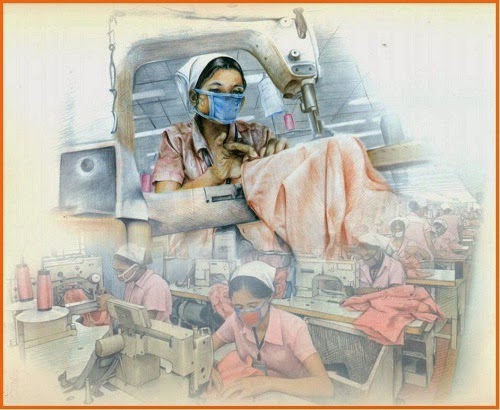 As the global population increased, demands also increased for human creativity and ingenuity in larger volumes. The need for satiation of this requirement brought about the inception of industrialization and modernization process, where social change and economic development are closely related with technological innovation in cohesion with the key positive factor of a plentiful supply of relatively low-cost, better skilled and adaptable labor. In today’s industrialized world, clothing manufacture has come a long way to the stage where clothes are now produced in mass quantities through the operation of industrial sewing machines and other modern garment appliances. Continuous advancement of sewing process helps us to meet the fashion conscious people’s fascination. As the global population increased, demands also increased for human creativity and ingenuity in larger volumes. The need for satiation of this requirement brought about the inception of industrialization and modernization process, where social change and economic development are closely related with technological innovation in cohesion with the key positive factor of a plentiful supply of relatively low-cost, better skilled and adaptable labor. In today’s industrialized world, clothing manufacture has come a long way to the stage where clothes are now produced in mass quantities through the operation of industrial sewing machines and other modern garment appliances. Continuous advancement of sewing process helps us to meet the fashion conscious people’s fascination. |
Industrial revolution and progress are taking place at the time paved the way for rapidly springing up garment factories. They started producing substantial quantities of apparel for the end users through bespoke garments also prevailed. Beside this up gradation of sewing thread technology helped to boost apparel industry. However, gradually ready-made garments started taking away the place of the bespoke garments. Hence, apparel production moved out from the cottages due to bulk demand, and it was run by factories with well furnished high-speed machines. Machine assembling process can generate more uniform wearers with fewer defects what could meet the demand of fashion conscious people.
You may like: Gist Qualities to be a Great Fashion Designer




Leave a Reply
You must be logged in to post a comment.